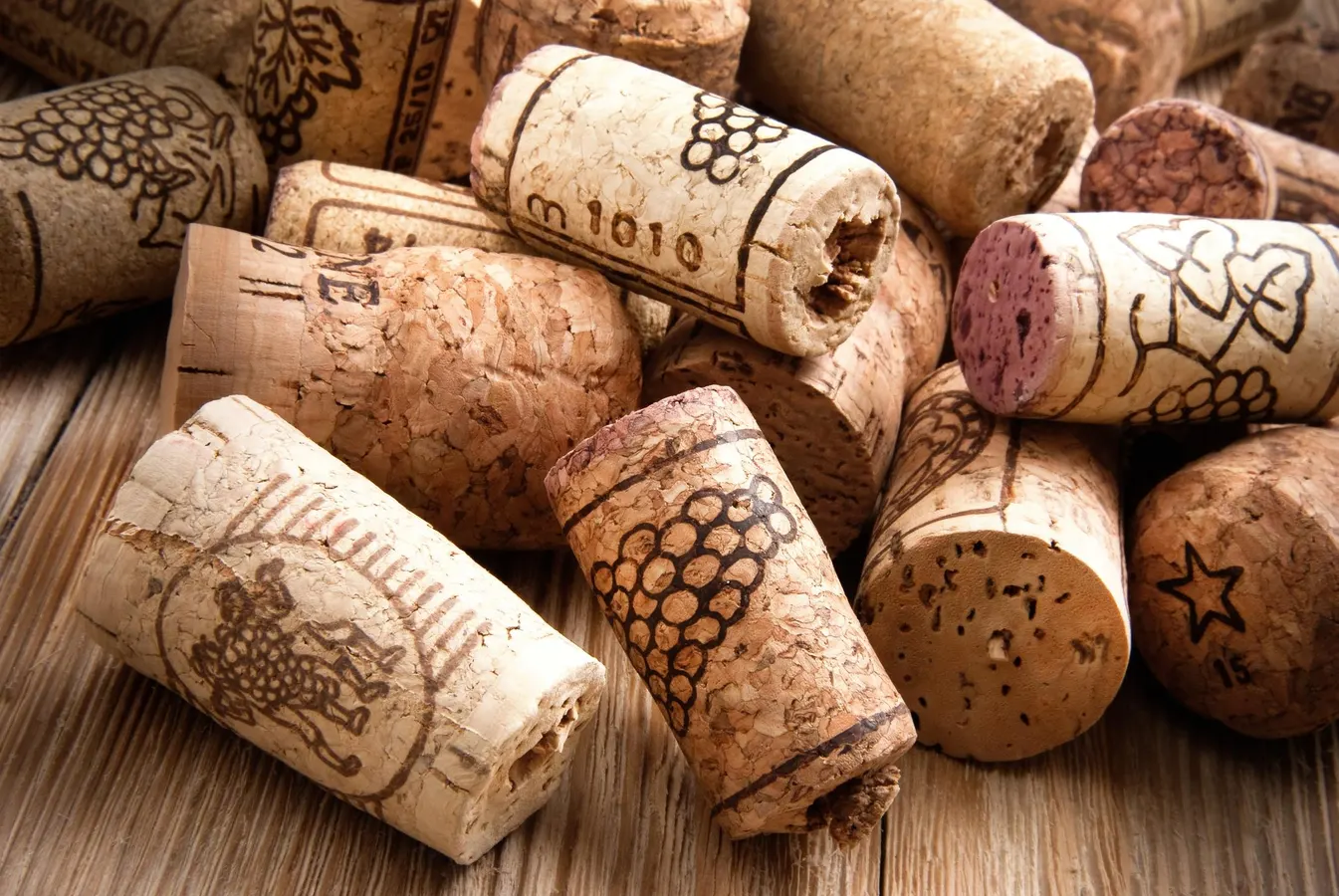By Contributor,Liz Thach
Copyright forbes

Cork stoppers for wine bottles
Did you know that a cork forest is one of the most environmentally diverse hotspots in the world? Furthermore, cork harvested from a cork tree is not only used to make wine corks, but goes into more than 100 different products, including the hull of spaceships for both NASA and SpaceX.
Even more surprising is that cork trees can live over 200 years, and their bark can be harvested every 9 years, but only after they reach 25 years of age. Cork forests are not only home to hundreds of different wildlife species, but also provide jobs for thousands of small family businesses in Portugal, Spain, France and Italy.
These are just a few of the amazing facts I learned about corks after visiting Amorim Cork America, headquartered in Napa, California, and met with CEO, Pedro Fernandes, and Director of Marketing and Sales, PJ Awe.
“Cork is an ultimately reusable material, and we use 100% of the cork we harvest for many different products. There are 7,000,000 acres or cork forests and they are almost entirely self-regenerating, in that the trees regularly drop acorns that replant themselves,” stated Pedro Fernandes.
The cork is harvested from the cork forests in Portugal, where Amorim’s corporate headquarters are located. There the cork is manufactured into many different products and shipped around the world, but their major product is the wine cork.
“We receive shipments of the wine corks here in our Napa warehouse, where we conduct multiple quality tests to verify that they meet the highest standards to seal wine bottles. We use a mix of laser, ink and fire branding to decorate the corks for many clients with the artwork of their choice,” explained PJ Awe.
“Altogether, we process millions of corks for wine bottles per day in Napa, and then deliver them to our customers,” she added.
Amorim Cork America Executives: PJ Awe, Director of Marketing & Sales, and CEO, Pedro Fernandes
Amorim, also called Corticeira Amorim (COR), is a public company, traded on the Euronext Lisbon stock exchange. It was founded in 1870 by António Alves de Amorim, and the company was run for years by his son, Americo Amorim, who frequently appeared on the Forbes Billionaires List. When he passed in 2017, his wife, Maria Fernanda Amorim, and four daughters inherited the family fortune, and today Maria is #577 on the Forbes billionaire list with an estimated net worth of $6.5 billion.
Today the company has nearly 5,000 employees with 2024 revenues totaling $1.102 billion (€939.1 million), according to the 2024 Amorim Annual Report. It is the largest cork manufacturer in the world.
In some surprisingly good news for the global wine industry, it was announced on Sept. 5, 2025, that corks would be exempt from U.S. tariffs. This is mainly because cork forests can only be found in southern Europe and north Africa, and it would not be possible for the U.S. to develop its own cork industry. Placing a tariff on imported corks would only increase wine prices in the U.S., so corks will not be subject to tariffs.
Amorim Cork America’s Relentless Focus on Quality
As we toured the testing and manufacturing Amorim Cork America facility in Napa, I was surprised to see how large it is, with a full lab to test the quality of the corks and massive machines to refine and laser stamp the corks for individual customers.
“We test the quality of the corks multiple times in our labs, including TCA tests, extraction tests, peroxide checks, and many other tests,” explained PJ.
She mentioned that because corks are considered to be a food grade product that the facility in Napa is HCAAP certified. In addition, their facility in Portugal is ISO certified and the Napa facility also follows ISO methods when sampling. They produce many different styles, sizes, and colors of corks, ranging from natural corks to micro-agglomerated corks.
“Thanks to ongoing innovation and quality control, our entire cork portfolio is now nearly free of TCA.” stated PJ proudly. TCA, or cork taint, was the largest problem for the industry in the past, but now with modern manufacturing methods and stringent quality control checkpoints, the cork industry has aggressively faced the problem together.
Passing through massive round cages of corks, I was able to identify many famous American wine brands, especially from Napa Valley, that were being processed and stamped in the facility.
Cork Trees in a Cork Forest in Portugal
The Amazing Sustainability Features of Amorim Cork
Probably one of the most amazing features about cork is that every single component of the corks is used for different purposes, so it very sustainable and recyclable.
“Cork is an ultimately reusable material, and we are engaged in a collective effort for recycling,” stated Pedro. “For example, we are now partnering with the Rockwell Group by working with many restaurants and distributors, such as Southern Glazers Wine & Spirits (SGWS), to be collectors of corks so we can recycle them with Cork Collective.”
One challenge is that there are not that many locations where people can take their wine corks to be recycled and there is no financial incentive to recycle. “Right now people are volunteering to return their corks, but we need to find places where they can do that,” explained Pedro.
The reason that cork has so many applications is because it is fire retardant, lightweight, shock absorbent, elastic and compressible, impermeable to liquids, an acoustic insulator, resilient, hypoallergic and, of course, sustainable. Thus, it is used in many products, including the hulls of NASA and SpaceX spaceships.
“A new and exciting application for recycled corks is sports field infills and shock pads for turf,” stated Pedro. “In the past many sports fields at schools were filled with discarded rubber tires, but we are starting to switch to cork, which is a much more natural product and better for kids.”
PJ mentioned that every part of the cork can be recycled and dropped off to their Napa facility in order to extend the lifecycle of the cork into other non-food products. Once the recycled corks are ground up again to reuse the material, even the cork dust that is created from that grinding process can be used as fuel. “We capture the cork dust and burn it as a biomass energy source for the company,” she said.
In 2007, Amorim Cork was the first cork company to start publishing an annual sustainability report. A current goal of the company is to become self-sustaining by running on 100% controlled renewable electricity by 2030. They have already achieved a negative carbon sequestration numbers on all their products, with independent verification from LifeCycle Assements experts.
Some of the Many Applications for Cork
The Future of Amorim Cork America
When I asked if they were worried about decreasing global wine sales, Pedro responded: “We are bullish about the future. There is something about a risky time in business that spawns innovation.”
He added that they are naturally worried about the slow down, because it is in all markets this time, rather than just certain areas. “Temperance is part of the problem now, but we need to be optimistic. Drinking wine is one of the ways to help people connect, share and unite.”
“We are bullish about the future. There is something about a risky time in business that spawns innovation.”
Pedro Fernandes, CEO of Amorim Cork America
He mentioned that they are investigating several new services and products. “One product we are offering now is a new beeswax based coating for natural corks called BeeW. This enhances the technical capacities of natural whole cork stoppers and delivers more consistent oxygen ingress rates,” said Pedro.
They are also working on a Helix 2.0 cork that is easily pulled from and reinserted into wine bottles, similar to screw caps, but you don’t need a cork screw and this is far more sustainable by using cork. This sounds like an excellent innovation!
Finally, when I asked Pedro if screw caps were replacing corks, he explained that – though many people buy wine with screw caps – they also continue to purchase wine with corks.
“There’s something magical about the pop of a cork — a classic tradition of celebration shared across the globe. Even more inspiring is knowing that this simple act connects us back to nature,” PJ concluded.
Editorial StandardsReprints & Permissions



